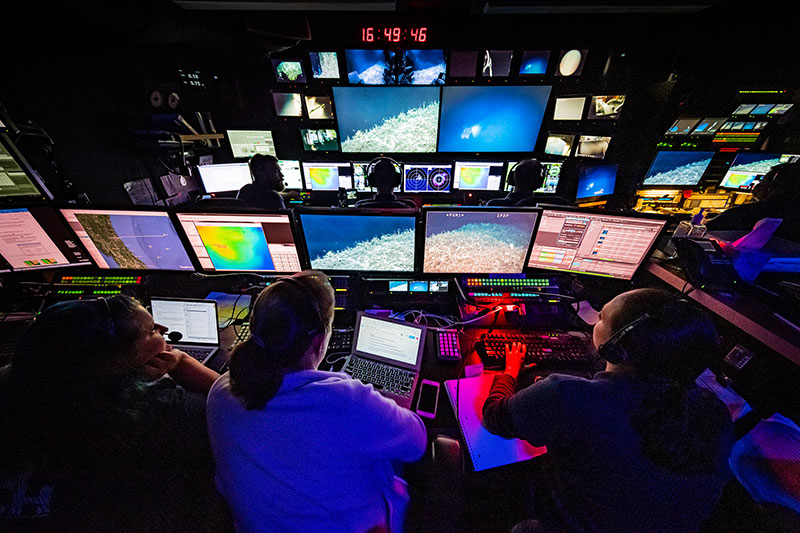How does NOAA deliver live video from ship to shore?
NOAA uses “telepresence” technology to deliver data and video in real time from ships such as NOAA Ship Okeanos Explorer to scientists, teachers, students, and members of the general public on shore.

Mission control during remotely operated vehicle dive onboard NOAA Ship Okeanos Explorer. Image courtesy of NOAA Office of Ocean Exploration and Research, Windows to the Deep 2019. Download image (jpg, 127 KB).
Telepresence involves the use of technology to allow a person to feel, interact, and collaborate as if he or she were present at one location when in fact he or she is at a different location. When applied to ocean exploration, this ability to engage and share data and information with participants around the world, not just those on a research vessel, offers endless possibilities for learning and collaboration.
The educational and collaborative opportunities made available via telepresence are a major part of NOAA Ship Okeanos Explorer’s mission for advancement of knowledge and are key components of the ship's exploration strategy. Okeanos Explorer's telepresence capability is based on advanced broadband satellite communication through which live images can be transmitted from the seafloor to scientists ashore, to classrooms, to newsrooms, and to living rooms, meaning anyone, anywhere with an Internet connection can follow an expedition live.
Telepresence also makes it possible for shipboard equipment to be controlled by scientists at shore-based Exploration Command Centers. In this way, scientific expertise can be brought to the exploration team as soon as discoveries are made, but at a fraction of the cost of traditional oceanographic expeditions.
All communications with the shore are made possible by Okeanos Explorer’s powerful satellite dome, which houses the ship’s Very Small Aperture Terminal (VSAT) dish antenna. This antenna enables Okeanos Explorer to establish high-bandwidth connectivity with remote parts of the world, to transmit high-definition video feeds and establish real-time voice communication with shore-based consoles. The antenna also provides basic Internet connectivity for the ship’s personnel.